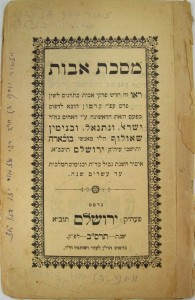Iraq and the Jewish People: The Babylonian Community
The Parthian Empire, an empire which originated in northeast Iran, came into being in 247 BCE and conquered Babylonia in 126 BCE. Little is known of Jewish life in Mesopotamia until the time of the Babylonian tannaim.
The tannaim, also known as the Pharisees, were the teachers of Mishnah, which had begun to develop earlier but gained momentum and volume around the time of Hillel and Shammai, roughly between 40 BCE and the year 0. All that is known is that at the time there were some rabbis in Babylonia, although little information exists about Babylonian academies. It is clear that by the second century there were rabbis in Babylonia.
Although Hillel is knows as “the Babylonian,” it is difficult to prove that he was trained in Babylonia. It is possible that he came to Israel as a youth. However, the idea that a man trained in Babylonia was able to convince the rabbinic leaders of the time, the Bnei Batera—who were themselves from an area that bordered on Syria, beyond the Golan heights—of his interpretation of halachic matters such as Pesach and the sacrifice is quite difficult to accept. The significance of the name “the Babylonian” is also questionable. (In modern times, last names generally reflect a characteristic from the past; for instance, Jews called Ashkenazi were only in the very distant past from Germany and were named as such because they were more recently living in a Sephardic region where their heritage was an exception.)
By the second century CE, there were a number of cities in exile documented as having rabbis; one was named Netzivim, and existed in what had once been Assyria. Rabbis in these cities sent the annual half-sheqel tax which was collected from the Babylonian Jewish communities and were in contact with the rabbis in Israel. In a few cases, the Babylonian rabbis were assumed to have authoritative opinions on halachic matters. It is clear that the Babylonian Jewish community had shifted from a simplistic, Bible-based community to being part of the intellectual development that we know as Mishnaic Judaism. There is no question that, in some fashion, the Mishnah was brought to Babylonia (the debate over whether orally or in writing is one that began in the Middle Ages and continues today). Al-though there were variations in the Mishnah as it existed in Babylonia, it obviously existed in the exile and it was there that the Talmud originated.
The development of the Talmud extended from the year 200 to 500. The Talmud exists in two parallel versions: the Talmud of the land of Israel, called the Jerusalemite Talmud despite the fact that it was developed primarily in Tiberias and the Galilee; and the Babylonian Talmud, developed in cities such as Nehardea, Sura, Pumbedita, Mata Mechasyah, and Machoza, major centers of Jewish life.
The Jewish population in Babylonia had unexpectedly increased. Based on evidence from the Islamic period a few centuries later, it is clear that the Jewish community was exceptionally large in Babylonia. The rate of reproduction cannot account for the entire increase; it appears that many non-Jews had converted to Judaism. This theory is supported by the admixture of pagan names in the community. The sizable population meant that Jews were also dominant in political life.


Leave a Reply